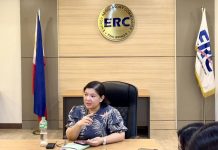
[av_one_full first min_height=” vertical_alignment=” space=” custom_margin=” margin=’0px’ padding=’0px’ border=” border_color=” radius=’0px’ background_color=” src=” background_position=’top left’ background_repeat=’no-repeat’ animation=”]
[av_heading heading=’Baby sea turtles released off San Jose shores’ tag=’h3′ style=’blockquote modern-quote’ size=’30’ subheading_active=’subheading_below’ subheading_size=’15’ padding=’10’ color=” custom_font=”][/av_heading]
[av_textblock size=” font_color=” color=”]
Saturday. September 30, 2017
[/av_textblock]
[av_textblock size=” font_color=” color=”]
SAN JOSE, Antique – Sixty-five green sea turtle (Cheloniamydas) hatchlings and three juvenile hawksbill turtles (Eretmochelysimbricata) were recently released on the shores of Barangay Madrangca of this capital town.
Being in a province with a Pawikan Conservation Program, residents of Barangay Madrangca, together with the local government unit of San Jose, took care of the turtle eggs and protected them from threats upon their discovery near the shorelines.
After the eggs hatched, the Provincial Environment and Natural Resources Office facilitated the hatchlings’ release.
The International Union for Conservation of Nature ranked green sea turtles as endangered and hawksbill turtles as critically endangered – two of the six species of marine turtles in the world found in the Philippines and included in the list of endangered species of the Department of Environment and Natural Resources (DENR).
Prior to the release, a short orientation on the conservation and protection of sea turtles was conducted to heighten the public’s level of awareness and further enhance their knowledge on marine turtles.
“Sea turtles play a vital role in keeping our oceans healthy. They help maintain seagrass beds and coral reefs healthy, balance the marine food webs, transport nutrients and many more,” said Regional Director Jim Sampulna of the Department of Environment and Natural Resources.
After the orientation, the turtles were released. The hatchlings crossed the beach to the water by themselves.
Hatchlings have an innate vigor called “infantile frenzy” that uses reserved energy in the yolk remains; this propels them across the beach and through the surf.
“Their population is slowly decreasing and this is very alarming. The Department is urging the public’s cooperation to eliminate man-made threats such as harvesting / collecting of eggs and poaching of marine turtles. They are protected under Republic Act 9147 or the Wildlife Resources Conservation and Protection Act,” said Sampulna.
Poachers will be penalized, he warned.
Park Maintenance Foreman Joery Oczon and Forester Kenny Marie Flores from the Protected Area Management and Biodiversity Conservation Unit of the Community Environment and Natural Resources Office – Belison discussed prohibited acts to marine wildlife such as the dugong and marine turtles.
The presence of dugong and marine turtles in a certain area is an indication of a healthy and protected coastal and marine ecosystem, they stressed.
“We don’t want to wait for these species to go extinct and regret that our children’s children will not be able to see how beautiful these marine turtles are and what they can do for our environment,” said Sampulna.
Sea turtles face various threats to their existence. Hunting, pollution and damage to their habitat are just some of these that contribute to their declining population.
The survival rate of turtle eggs to sexual maturity is very low, estimated at around one or two individuals per thousand. Some estimates go even lower, at one individual per 10,000 eggs. (DENR-6/PN)
[/av_textblock]
[/av_one_full]





